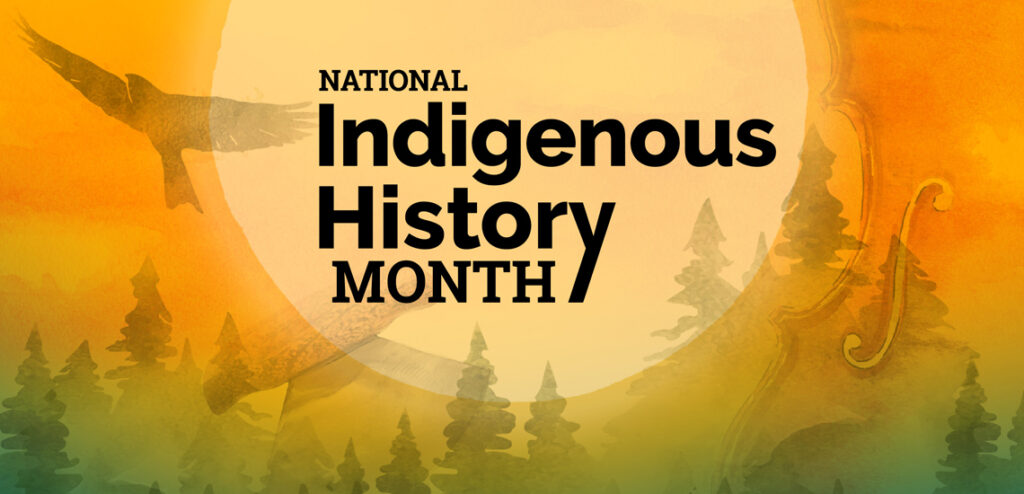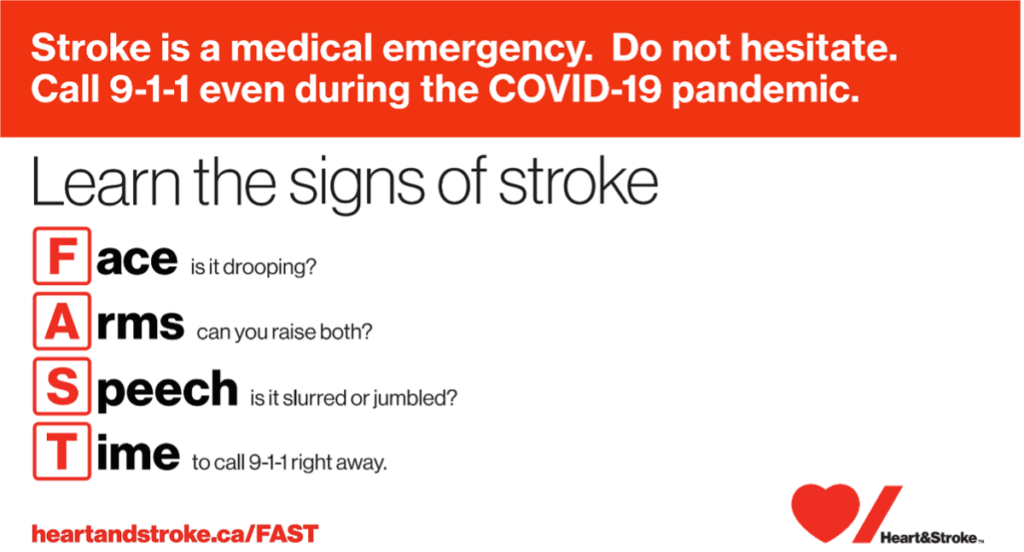In June, we acknowledge National Indigenous History Month, National Migraine and Headache Awareness Month, Stroke Awareness Month, National Cancer Survivor’s Awareness Day, World Brain Tumour Awareness Day, World Blood Donor Awareness Day, CDKL5 Awareness Day, Dravet Syndrome Awareness Day, and National Post-Traumatic Stress Disorder (PTSD) Awareness Day. Read more about each date of significance below, written by members of our Inclusivity, Diversity, Equity and Accessibility (IDEA) Committee.
National Indigenous History Month

In June, learn about the unique cultures, traditions, and experiences of First Nations, Inuit, and Métis. It’s a time to honour the stories, achievements, and resilience of Indigenous Peoples, who have lived on this land since time immemorial and whose presence continues to impact the evolving Canada.
Here are a few ideas of how you can get involved and show your support:
Discover stories, traditions and cultures
The best way to gain a deeper understanding of First Nations, Inuit, and Métis experiences is through their own voices. Enjoy Indigenous storytelling by picking up a book, attending a show, watching a movie, or listening to music by Indigenous artists.
You can also check out the GC Indigenous Instagram account to learn more about inspiring Indigenous women, 2SLGBTQ+ people, environmentalists, artists, activists, scientists and researchers.
Explore the past and honour the truth
- Learn about Inuit across Canada
- Learn about Métis across Canada
- Learn about First Nations across Canada
Learn more about present-day communities
Look at these maps of Indigenous Peoples and lands to see the First Nations, Inuit and Métis communities around you and the traditional land you live on. Find out more about the significance of land acknowledgment and how you can integrate this practice into your life.
National Migraine and Headache Awareness Month
National Migraine and Headache Awareness Month (#MHAM) is observed in June. The month observes, recognizes, and honours the headache and migraine communities that are continuously working together to ensure that headache disorders are recognized as legitimate neurobiological diseases.
It also encourages people with migraines or chronic headaches to consult a medical professional for proper diagnosis and treatment. It aims to enlighten individuals with headache disorders about the various treatments available. There are many different types of headaches that can be caused by tension, over-exertion, caffeine, illness, lack of sleep, post-traumatic injuries and more.
To learn more about headaches, migraines and resources, visit: https://migrainecanada.org/
Stroke Awareness Month
The Heart and Stroke Foundation of Canada recognizes June as Stroke Awareness Month. Their mission is to educate Canadians on the prevention of heart disease and stroke.
What is a stroke? A stroke happens when there is a sudden interruption of blood flow to any part of the brain, damaging cells. The effects depend on the area of the brain damaged, as well as the amount of damage done. There are three types of strokes to watch for:
- Ischemic Stroke: the most common type of stroke caused by a blockage or clot in a blood vessel in the brain. The blockage can sometimes be caused by a build-up of plaque in an artery.
- Hemorrhagic Stroke: happens when an artery in the brain ruptures and the resulting interruption to blood flow causes damage to the brain. High blood pressure is a common cause of this type of stroke.
- Transient Ischemic Attack (TIA): also known as a mini-stroke or a warning stroke, it is caused by a small clot that briefly blocks an artery. While symptoms are temporary, a TIA can be a warning sign of something more serious.
The symptoms of stroke come on suddenly, usually without any warning, and require immediate attention. If you think someone may be having a stroke, remembering the FAST test could make all the difference:

In addition to the FAST method, there are other less common signs of stroke, including:
- Sudden severe headache
- Blurred or double vision
- Numbness usually on one side of the body
- Loss of balance or dizziness
Did you know that almost 80% of strokes can be prevented by making healthy choices and managing risk factors? While some risk factors can’t be changed – such as family history, heritage, and age, there are many things you can do to decrease your chance of stroke, such as:
- Reducing stress
- Eating a healthy diet that includes more fruits and vegetables
- Being physically active
June 2: National Cancer Survivor’s Day
This year, the 37th annual National Cancer Survivors Day falls on Sunday, June 2, 2024. It is a day of celebration for those who have survived cancer, an inspiration for those recently diagnosed/undergoing treatment, a gathering of support for families and an outreach to communities. If you are interested in supporting National Cancer Survivor’s Day, the NCSD website shares a few ways you can get involved
- Host a celebration; visit https://ncsd.org/organize-an-event/ to learn more.
- Learn about cancer survivorship issues. Cancer survivors often face ongoing, long-lasting hardships because of their disease.
- Raise awareness
- Join your community celebrations
June 8: World Brain Tumour Awareness Day
This day is observed on June 8 every year to raise awareness and educate people about brain tumours. It was first observed by the German Brain Tumour Association, a Leipzig-based non-profit organization, in 2000. A brain tumour occurs when the cells inside the brain start growing at an abnormal speed, forming a mass of abnormal cells. The enclosed space inside the skull is limited, and when these abnormal cells start closing in the space, symptoms are observed.
June 14: World Blood Donor Awareness Day
World Blood Donor Day, observed annually on June 14, is a significant event in Canada, highlighting the critical importance of voluntary blood donations to save lives and improve health. Organized by the World Health Organization (WHO), this day recognizes the selfless contributions of blood donors and encourages more Canadians to participate in this life-saving act. Canadian Blood Services and Héma-Québec play pivotal roles in organizing events and drives across the country to boost awareness and encourage new donors. The theme for World Blood Donor Day often emphasizes the need for universal access to safe blood and the role of blood donation in achieving global health goals.
June 17: CDKL5 Awareness Day
CDKL5 Deficiency Disorder is a rare genetic mutation that prevents the brain from creating the proteins needed for development. Those affected by this disorder develop seizures from a very young age and struggle to achieve basic motor, vision and developmental skills. Despite being rare, CDKL5 disorder is one of the most common forms of genetic epilepsy in Canada. This awareness day allows us to recognize CDKL5 disorder and promote awareness efforts, research, collaboration and fundraising. You can support those in the CDKL5 community by wearing lime green and sharing your knowledge about CDKL5 disorder both on and offline.
June 23: Dravet Syndrome Awareness Day
This is a rare and life-long condition that begins in infancy and is marked by frequent treatment-resistant seizures, significant developmental and motor impairments that persist into adulthood and an increased risk of sudden death. Dravet Syndrome is a genetic disorder of Chromosome 2, usually affecting a gene called SCN1A, causing epilepsy and other neurological and developmental problems. Dravet syndrome accounts for 1% of the epilepsy population. The condition gets its name from the doctor who first recognized and described it—Dr. Charlotte Dravet.
Dravet Syndrome affects males and females equally and is present in all nationalities, races and ethnic groups. Today marks a day to honour those in the Dravet community and raise awareness for fundraising and research efforts.
June 27: National Post-Traumatic Stress Disorder (PTSD) Awareness Day
Although many of us associate PTSD with the impacts of war, terrorism and destruction, post-traumatic stress disorder can occur after other very scary or traumatic events, such as abuse, an accident, witnessing a horrific event or a natural disaster.
Symptoms of PTSD include:
- Reliving – flashbacks, hallucinations, nightmares of the incident.
- Avoiding – avoiding people, places, things, or memories that remind the trauma.
- Excessive arousal – increased alertness, anger, fits of rage, irritability, or hatred, difficulty sleeping or concentrating.
- Intrusive negative, distressing thoughts or feelings such as guilt.
- Flat affect (no expression of emotions)
- Young children may show delays in toilet training, motor skills, or language.
- Feeling unsafe even when there is no danger present.
The presence of symptoms can affect well-being and quality of life and may create a need for mental health support.
Based on Statistics Canada’s Survey on Mental Health and Stressful Events in 2021, they found that PTSD affected about 5% of people in Canada who reported their symptoms to their treating physician, but it is anticipated that many more Canadians have undiagnosed PTSD.
PTSD can be treated, so seeking help is important. If you or someone you love is facing challenges related to mental health and well-being, the following resources provide information about PTSD, mental health support and mental health services in Canada:
Check out more Grandview Kids articles
- Team Grandview achieves Accreditation with Exemplary Standing, receiving a perfect score
- “Grandview Kids became my life raft” – International Day for People with Disabilities
- December: Dates of Significance
- From the search for support to finding a village: Celebrating Giving Tuesday
- Scarlett sparkles with hope in every step: Grandview Kids 2025 Holiday Campaign
